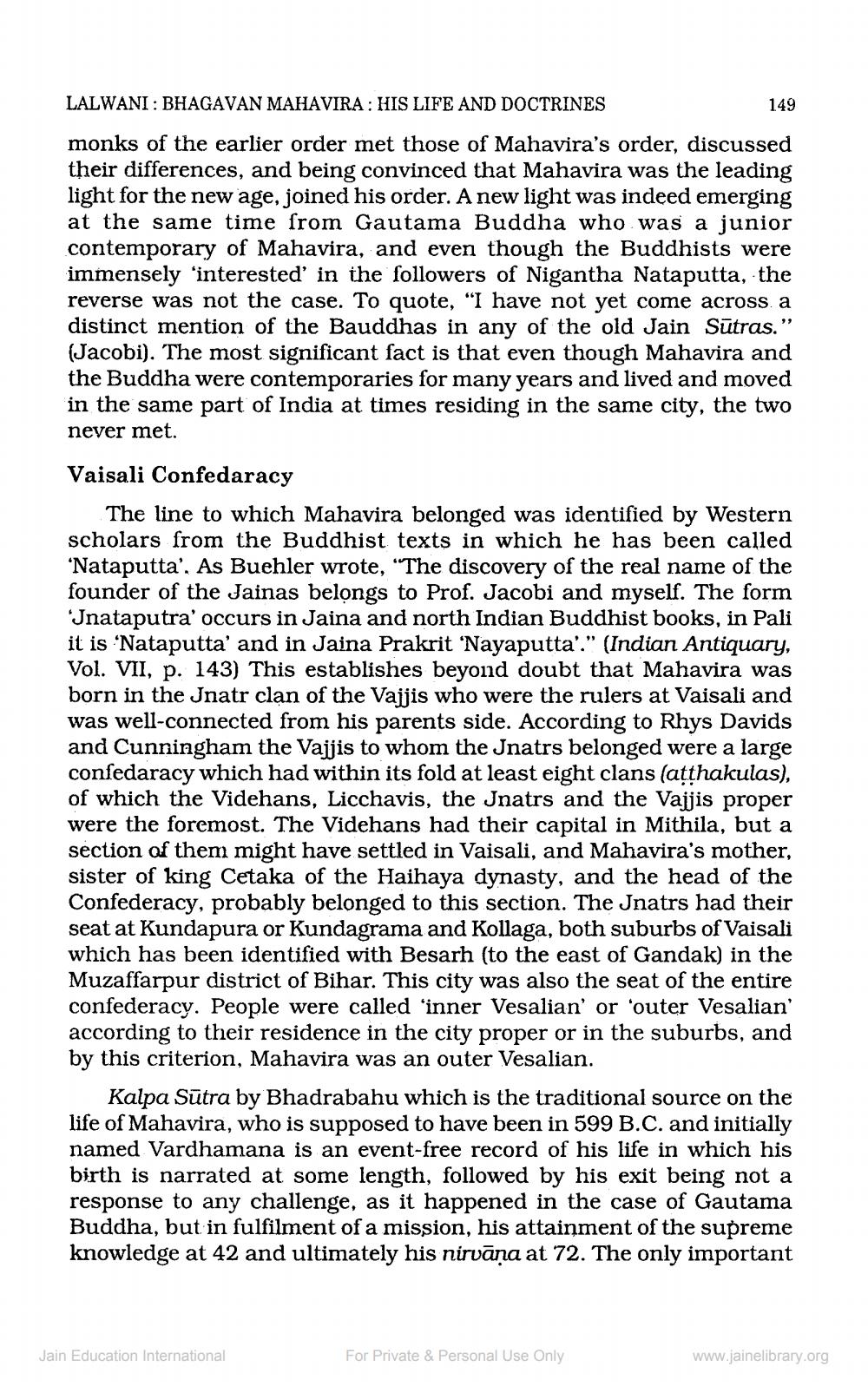Book Title: Jain Journal 2001 04 Author(s): Jain Bhawan Publication Publisher: Jain Bhawan Publication View full book textPage 5
________________ LALWANI: BHAGAVAN MAHAVIRA: HIS LIFE AND DOCTRINES 149 monks of the earlier order met those of Mahavira's order, discussed their differences, and being convinced that Mahavira was the leading light for the new age, joined his order. A new light was indeed emerging at the same time from Gautama Buddha who was a junior contemporary of Mahavira, and even though the Buddhists were immensely interested in the followers of Nigantha Nataputta, the reverse was not the case. To quote, “I have not yet come across a distinct mention of the Bauddhas in any of the old Jain Sūtras." (Jacobi). The most significant fact is that even though Mahavir the Buddha were contemporaries for many years and lived and moved in the same part of India at times residing in the same city, the two never met. Vaisali Confedaracy The line to which Mahavira belonged was identified by Western scholars from the Buddhist texts in which he has been called ‘Nataputta'. As Buehler wrote, "The discovery of the real name of the founder of the Jainas belongs to Prof. Jacobi and myself. The form Jnataputra' occurs in Jaina and north Indian Buddhist books, in Pali it is 'Nataputta' and in Jaina Prakrit 'Nayaputta'.” (Indian Antiquary, Vol. VII, p. 143) This establishes beyond doubt that Mahavira was born in the Jnatr clan of the Vajjis who were the rulers at Vaisali and was well-connected from his parents side. According to Rhys Davids and Cunningham the Vajjis to whom the Jnatrs belonged were a large consedaracy which had within its fold at least eight clans (atthakulas), of which the Videhans, Licchavis, the Jnatrs and the Vajjis proper were the foremost. The Videhans had their capital in Mithila, but a section of them might have settled in Vaisali, and Mahavira's mother, sister of king Cetaka of the Haihaya dynasty, and the head of the Confederacy, probably belonged to this section. The Jnatrs had their seat at Kundapura or Kundagrama and Kollaga, both suburbs of Vaisali which has been identified with Besarh (to the east of Gandak) in the Muzaffarpur district of Bihar. This city was also the seat of the entire confederacy. People were called 'inner Vesalian' or 'outer Vesalian' according to their residence in the city proper or in the suburbs, and by this criterion, Mahavira was an outer Vesalian. Kalpa Sūtra by Bhadrabahu which is the traditional source on the life of Mahavira, who is supposed to have been in 599 B.C. and initially named Vardhamana is an event-free record of his life in which his birth is narrated at some length, followed by his exit being not a response to any challenge, as it happened in the case of Gautama Buddha, but in fulfilment of a mission, his attainment of the supreme knowledge at 42 and ultimately his nirvana at 72. The only important Jain Education International For Private & Personal Use Only www.jainelibrary.orgPage Navigation
1 ... 3 4 5 6 7 8 9 10 11 12 13 14 15 16 17 18 19 20 21 22 23 24 25 26 27 28 29 30 31 32 33 34 35 36 37 38 39 40 41 42 43 44 45 46 47 48 49 50 51 52 ... 92
